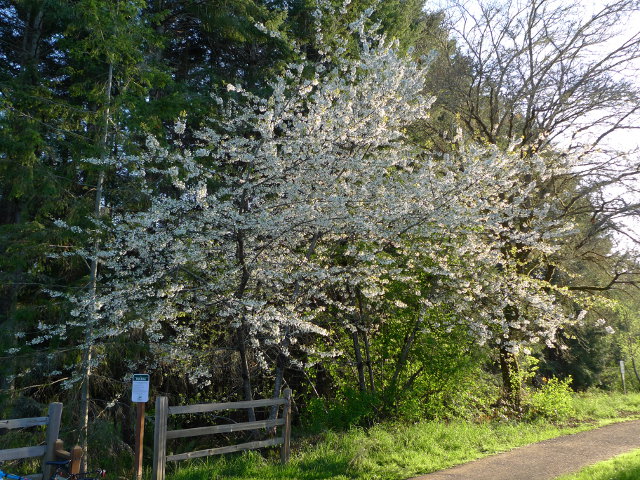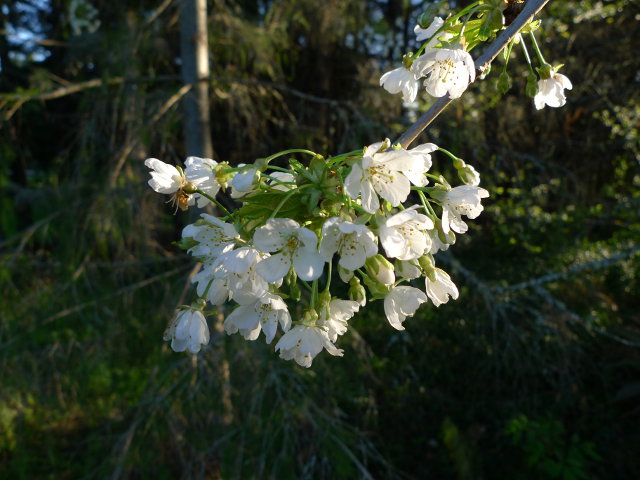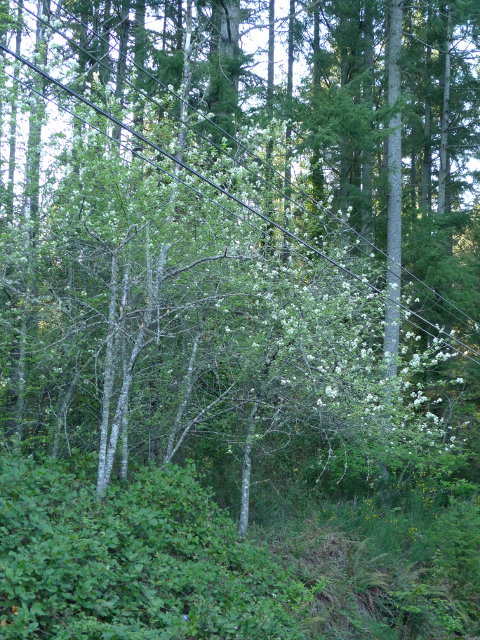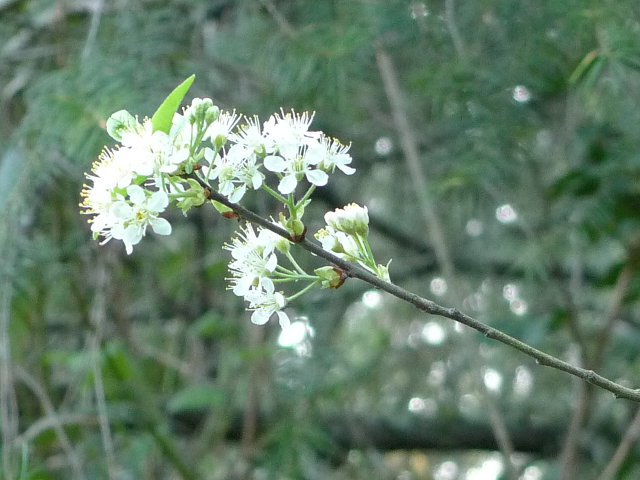Wild Cherries
Published at 13:01 on 1 May 2019
The wild cherries on the Island are finishing their annual spring bloom. We have two kinds.


Our most common wild cherry is the Mazzard Cherry, Prunus avium. It was introduced from Europe, and is basically the wild ancestor of the cultivated Bing cherry. Our situation is actually the reverse of this, however; the ancestors of our wild Mazzard Cherries were introduced as cultivated cherries, and began growing in our woods when birds ate those cherries and scattered their seeds.
The large fruit and smaller tree size of cultivated cherries are recessive characteristics, so their progeny quickly reverted to the dominant wild form for the species. Although smaller and not quite so sweet as Bing Cherries, the Mazzard Cherry’s fruit is completely edible. The trick is finding any that are within easy picking reach; the usual large size of this tree means most of its fruit is accessible only by birds.


The native Bitter Cherry, Prunus emarginata, is also found growing wild here. While not quite so common as its introduced cousin, there is still no shortage of them on the island. It is well-named; as author Arthur Lee Jacobson notes, its fruit is “bitter enough to make one grimace in agony.”
It turns out that birds have a very different sense of taste than mammals do, and happen to find this cherry’s fruit completely palatable. It is thus likely that their bitter flavor evolved as a way to discourage consumption by mammals. Birds, being able to fly, are likely to do a better job of spreading seeds widely than mammals are.
In addition to having fruit that is basically inedible to humans, the Bitter Cherry is in all respects (size of overall tree, leaves, fruit, and flowers) smaller than the Mazzard Cherry. The Bitter Cherry’s flowers tend to open a week or two later, right as the Mazzard Cherry is finishing its bloom.
The Bitter Cherry also tends to have a trunk and branches that are slender for a tree of its size (the Mazzard Cherry’s appearance is much stouter). The Mazzard Cherry is the showier of the two when in bloom, thanks to its larger flowers.
